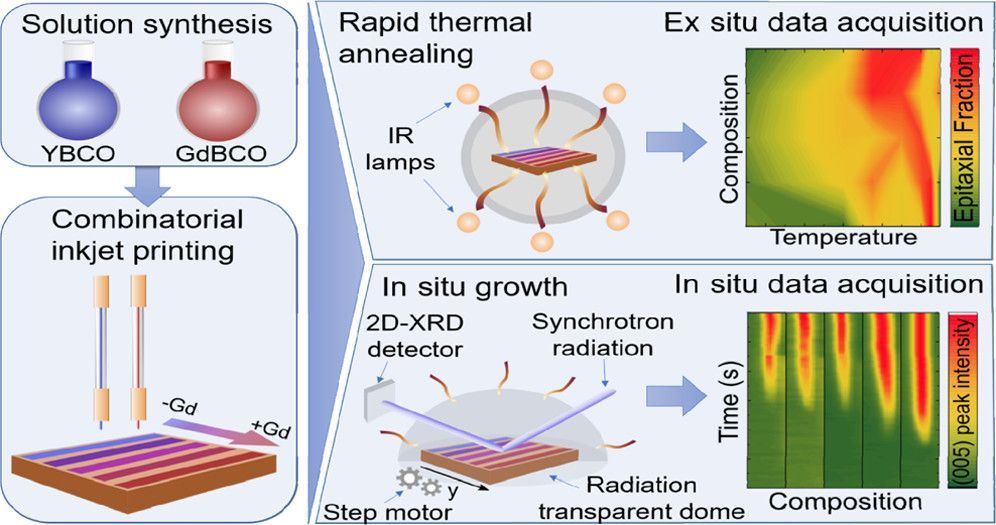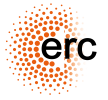
Combinatorial Screening of Cuprate Superconductors by Drop-On-Demand Inkjet Printing
Albert Queraltó*, Juri Banchewski, Adrià Pacheco, Kapil Gupta, Lavinia Saltarelli, Diana Garcia, Núria Alcalde, Cristian Mocuta, Susagna Ricart, Flavio Pino, Xavier Obradors, and Teresa Puig*
ACS Appl. Mater. Interfaces 2021, 13, 7, 9101–9112Publication Date: February 12, 2021 DOI: https://doi.org/10.1021/acsami.0c18014
Combinatorial and high-throughput experimentation (HTE) is achieving more relevance in material design, representing a turning point in the process of accelerated discovery, development, and optimization of materials based on data-driven approaches. The versatility of drop-on-demand inkjet printing (IJP) allows performing combinatorial studies through fabrication of compositionally graded materials with high spatial precision, here by mixing superconducting REBCO precursor solutions with different rare earth (RE) elements.The homogeneity of combinatorial Y1–xGdxBa2Cu3O7 samples was designed with computational methods and confirmed by energy-dispersive X-ray spectroscopy (EDX) and high-resolution X-ray diffraction (XRD). We reveal the advantages of this strategy in the optimization of the epitaxial growth of high-temperature REBCO superconducting films using the novel transient liquid-assisted growth method (TLAG). Advanced characterization methods, such as in situ synchrotron growth experiments, are tailored to suit the combinatorial approach and demonstrated to be essential for HTE schemes. The experimental strategy presented is key for the attainment of large datasets for the implementation of machine learning backed material design frameworks.

